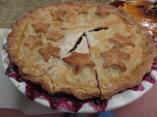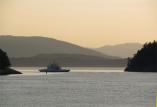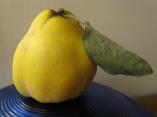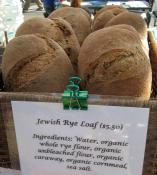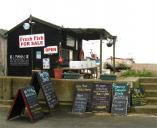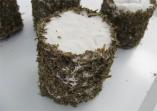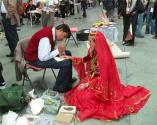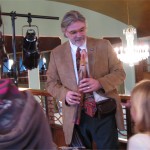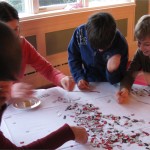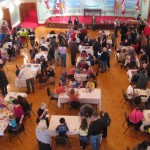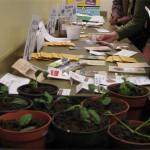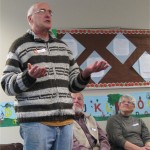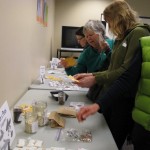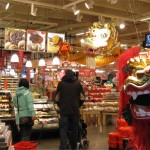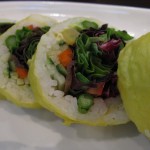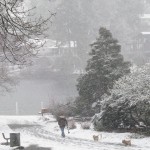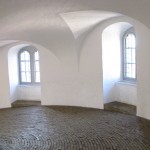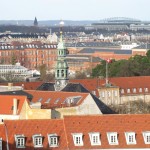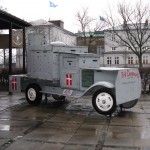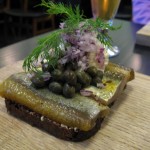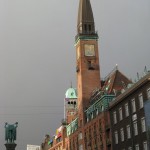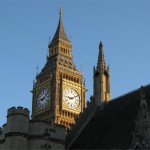 My last week in London was a whirl of farewells and final thises and thats before I hopped into my minicab back to Heathrow and leapt skyward in unexpected luxury – bumped up to business class by my friends at British Airways thank you thank you – and landed in calm clear weather in Vancouver, which held off on the rain, sleet and snow until I was tucked up into bed.
My last week in London was a whirl of farewells and final thises and thats before I hopped into my minicab back to Heathrow and leapt skyward in unexpected luxury – bumped up to business class by my friends at British Airways thank you thank you – and landed in calm clear weather in Vancouver, which held off on the rain, sleet and snow until I was tucked up into bed.
It was a week of nice food in London too. Still buzzing after the Copenhagen jaunt and the pleasures of the poetry workshop in Cambridge, I joined dear friends to tuck into a most excellent Sunday lunch at Great Queen Street in Holborn.
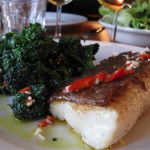 The pot roasted pheasant with poached quince looked (and tasted) wonderful but oh dear I’d just had pheasant (how often do I have the chance to say that?) so after a few reversals I opted for baked cod and spinach, which was studded with garlic and chili and was a delight, although I did think it was just barely overcooked, by a fish’s whisker. I was afforded a morsel of the chicken pot pie on the other side of the table that satisfied my curiosity on that score (chervil in the crust we thought? very nice touch).
The pot roasted pheasant with poached quince looked (and tasted) wonderful but oh dear I’d just had pheasant (how often do I have the chance to say that?) so after a few reversals I opted for baked cod and spinach, which was studded with garlic and chili and was a delight, although I did think it was just barely overcooked, by a fish’s whisker. I was afforded a morsel of the chicken pot pie on the other side of the table that satisfied my curiosity on that score (chervil in the crust we thought? very nice touch).
But there was much excitement to follow on the dessert menu: each item more delicious than the next. I had the prune and almond tart, which was soft and nutty and chewy where it should be and had a fine crunchy and slightly caramelly crust. Even so my envious fork went round and round the table. The salt creme caramel was exquisite: a silky yellow custard standing softly within its warm and salty caramel pashmina; the baked cheesecake light and lemony with a surprising and effective fruit confit alongside, and the beignets… ah the beignets. Featherlight and warm, faintly crunchy on the outside, tender on the inside. Why would anyone waste their money on donuts when they can have beignets with raspberry coulis here?



So all in all it was a great introduction for me to this restaurant – and an exceptional waiter who doted knowledgeably without being intrusive, and who had some friendly insights on the opera my dining companions were off to see. Manly yes, but I like it too.
Monday was spent mostly packing and trying out my new toy, a suitcase scale, which will be invaluable on my future travels.
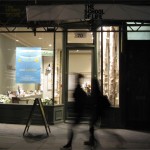 Monday evening I went to The School of Life where I promptly undid all my careful work packing and weighing by losing my head in the gift/book shop. My new treasures include a beautiful hardcover copy of The Flavour Thesaurus: Pairings, recipes and ideas for the creative cook, entertainingly written by Niki Segnit, which is arranged by ingredient and offers, well, just what it says on the label. But I was there for a class – the only one I could fit into my schedule – called How to Find a Job You Love. At my stage of life I had thought through a lot of what was covered, and suspect I may have my perfect job (though I have yet to work out how to make it pay!) but this topic is a winner and the subsequent offerings are selling like hotcakes in these risky times. There were a fair number of people present who’d been made redundant, and some who were stuck in unrewarding jobs, as well as a few who were looking to round out their part time positions with something meaningful. I liked the historical and sociological context that David Baker brought to the session, the exercises were useful and we were well fed and watered as well.
Monday evening I went to The School of Life where I promptly undid all my careful work packing and weighing by losing my head in the gift/book shop. My new treasures include a beautiful hardcover copy of The Flavour Thesaurus: Pairings, recipes and ideas for the creative cook, entertainingly written by Niki Segnit, which is arranged by ingredient and offers, well, just what it says on the label. But I was there for a class – the only one I could fit into my schedule – called How to Find a Job You Love. At my stage of life I had thought through a lot of what was covered, and suspect I may have my perfect job (though I have yet to work out how to make it pay!) but this topic is a winner and the subsequent offerings are selling like hotcakes in these risky times. There were a fair number of people present who’d been made redundant, and some who were stuck in unrewarding jobs, as well as a few who were looking to round out their part time positions with something meaningful. I liked the historical and sociological context that David Baker brought to the session, the exercises were useful and we were well fed and watered as well.
Tuesday I went to see The Iron Lady, which was as I’d expected well acted and cast (except for Jim Broadbent who never convinced me he was Denis) but I thought disappointing from its current day setting and the brevity of the flashbacks into Thatcher’s time. I didn’t feel I got much more insight into those years – and the trump card had already been played a few days before when 1981 cabinet papers were released that cast new light on old questions.
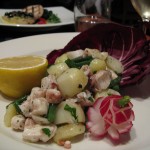 Anyway we mulled all this over a few Irish rock oysters at Pescatori, followed in my case by a nice octopus salad (which did make me pine for Parma, but was good in a different way, a kind of spin on salade nicoise, with potatoes and green beans rounding it out). I confess that the treat of the day for me was a glass of Passito di Panterellia, which is quite simply heaven in a glass, and I savoured every drop.
Anyway we mulled all this over a few Irish rock oysters at Pescatori, followed in my case by a nice octopus salad (which did make me pine for Parma, but was good in a different way, a kind of spin on salade nicoise, with potatoes and green beans rounding it out). I confess that the treat of the day for me was a glass of Passito di Panterellia, which is quite simply heaven in a glass, and I savoured every drop.
Wednesday was another lunch with dear friends and former neighbours, and a bit more folding, rolling, shoving, kneeling, sweating and swearing over suitcases. Thursday yet another lunch with dear friends and poets and a final poetry workshop. And Friday the s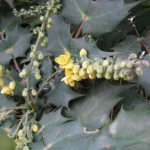 un shone on the parrots, the Mahonia japonica (not to be confused with the Mahonia aquifolium – Oregon Grape) shared its wintry perfume as we passed by on our way to a farewell lunch at Tarantella where the Melanzane parmigiana and Spaghetti alla vongole were both excellent. And all too soon, the cab driver was there and my Euro-time was over… for now.
un shone on the parrots, the Mahonia japonica (not to be confused with the Mahonia aquifolium – Oregon Grape) shared its wintry perfume as we passed by on our way to a farewell lunch at Tarantella where the Melanzane parmigiana and Spaghetti alla vongole were both excellent. And all too soon, the cab driver was there and my Euro-time was over… for now.
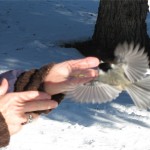 I am back at St Peter’s Abbey for another winter writing retreat with the Saskatchewan Writers Guild and CARFAC artists. Mild and sunny outside, with hungry birds loading up on free peanuts. When I first started coming to the winter artists colonies, about ten years ago, only the chickadees were bold enough to come to our hands; then the nuthatches took over. Today it was only chickadees. Indoors, the colonists, as once we were known (retreatants just doesn’t have the same ring) are unloading ideas and getting into the swing of a quiet time among the monks.
I am back at St Peter’s Abbey for another winter writing retreat with the Saskatchewan Writers Guild and CARFAC artists. Mild and sunny outside, with hungry birds loading up on free peanuts. When I first started coming to the winter artists colonies, about ten years ago, only the chickadees were bold enough to come to our hands; then the nuthatches took over. Today it was only chickadees. Indoors, the colonists, as once we were known (retreatants just doesn’t have the same ring) are unloading ideas and getting into the swing of a quiet time among the monks.

